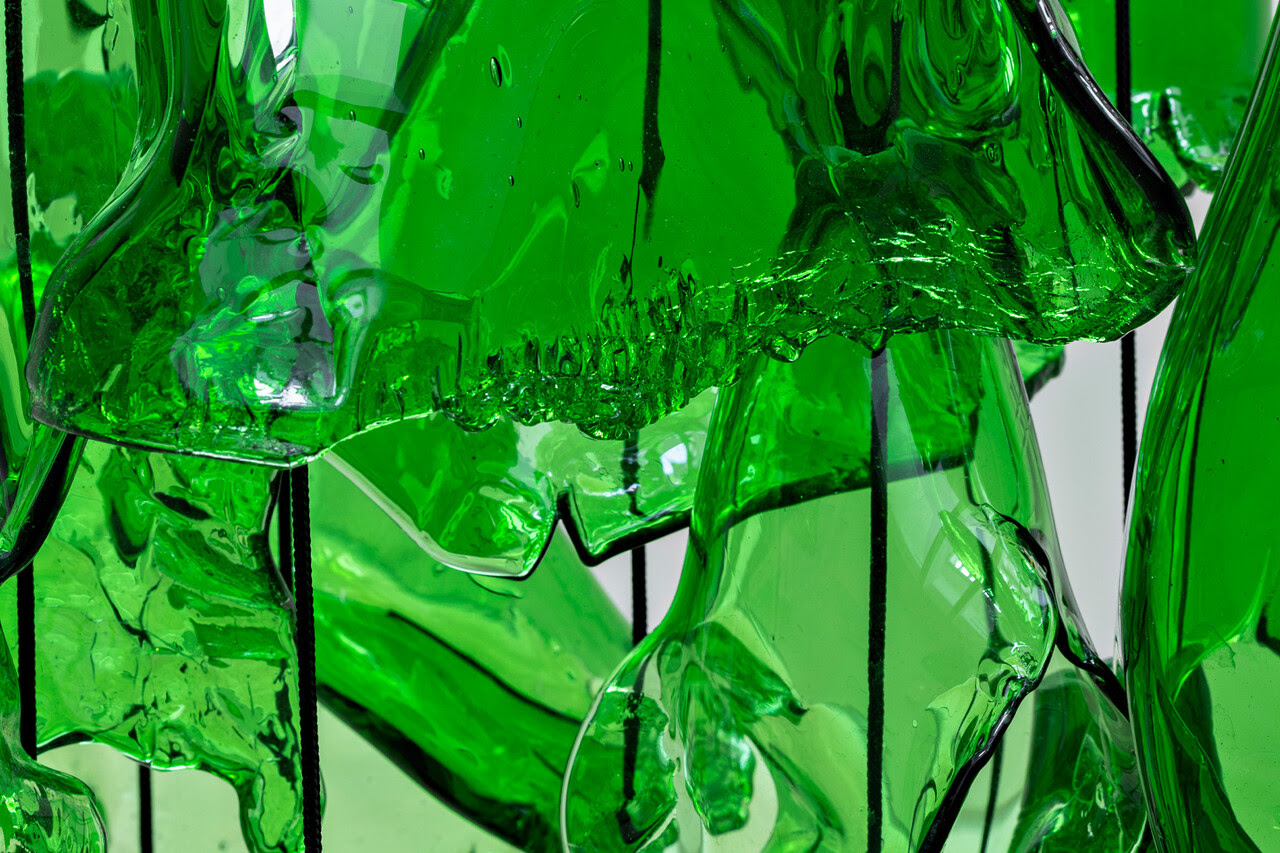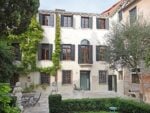Tue Greenfort – Medusa Alga Laguna

Evento Collaterale della Biennale di Venezia.
Comunicato stampa
For the first time, the ERES Foundation will be present at the Venice Biennale as a Collateral Event. With the project Medusa Alga Laguna by Danish conceptual artist Tue Greenfort (b. 1973), the foundation continues its 2021 Munich exhibition Alga in Venice. Greenfort’s approach of incorporating the ecological condition of an exhibition’s natural environment into his artwork interfaces with a core theme of the foundation—the scientific examination of climate change and species extinction. This makes Venice, with its lagoon a sensitive ecosystem itself, as well as a city particularly affected by climate change, the focus of the foundation’s contribution to the Biennale Arte 2022.
Crisp green glass works hang from the ceiling, while delicate paper tondi reveal filtered traces of algae from the Venice Lagoon. Medusa (jellyfish) sculptures from Murano´s glass workshops float in the exhibition space, plaster casts of beach sections concentrate on the coast as a biozone, whereas extracts of local newspapers elucidate the current environmental state of Venetian waters.
The installation Medusa Alga Laguna focuses on diverse interspecies life in the Lagoon. The artist brings in human and non-human relationship by reflecting on organisms that are mostly neglected and often barely visible. The fascination with scale is a point of departure for many of his projects. His micro/macro-cosmos perspective is the basis for his installation, which transports us into the biodiverse world of Venetian waters and reveals the complexity of lifeforms such as algae and medusae. Algae are pre-human lifeforms that are increasingly becoming a significant issue in the balance of oceanic ecosystems and the global impact of intensified industrial farming which has led to a glut of nutrients in the world’s oceans, a phenomenon known as eutrophication. These three billion years old survivors, creatures of the planet´s breathable atmosphere, are now a curse as well as a blessing.
Reflection on time span makes glass a suitable material. Greenfort´s use of glass is a reference to the realistic glass representations of the Bohemian Blaschka family. Their botanical and zoological glass models—including maritime creatures—were extremely popular in the mid-19th century as teaching models in the natural sciences as well as collectors’ items. The handcrafted technique is still considered unrivaled today. With the glass workshops on Murano, however, a centuries-old craft tradition has survived to this day. The fact that Greenfort´s „Medusa” was made in Murano establishes a time reference to a 19th century form of nature presentation and incorporates modern tourism. Mass produced glassware, including jellyfish, are sold in souvenir shops as sought-after collectibles in the lagoon city.
Opening hours
April 23–September 11: Friday, Saturday, Sunday, 11am–6pm
September 30–October 3: 11am–6pm
October 28–November 1: 11am–6pm
Transport: Giardini
ERES Foundation
The institution, based in Munich, Germany, fosters dialog between science and the fine arts. The foundation was recognized as a nonprofit organization in 2004. It operates independently of any economic and political interests, sets its own key topics and seeks integral views that unite science and art. Its exhibitions have included works of art by both young and internationally acclaimed artists. Annie Leibovitz, Marjetica Potrč, Kiki Smith, Agnès Varda, Carsten Höller, Martin Kippenberger, Robert Rauschenberg and Seth Price, to name just a few, were among them. It selects art that opens up sensual, associative approaches to natural science topics. The focus is not on the illustration of facts, but on the independent and free exploration of the respective subjects. The emotional access to science that art can provide is one of the foundation’s central concerns. Accompanying the exhibitions, renowned natural scientists from Europe’s finest institutions of higher learning such as the Max Planck Institute and the Leibniz-Gemeinschaft give lectures.



